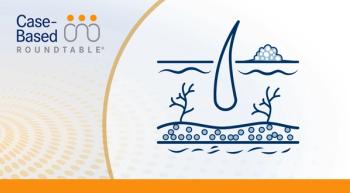
Experts Compare Efficacy of Larotrectinib and Entrectinib in NTRK Fusion+ Cancers
Jesús García-Foncillas, MD, PhD, discussed the comparison of larotrectinib versus entrectinib for the treatment of NTRK fusion-positive tumors in an interview with Targeted OncologyTM.
The comparative efficacy of larotrectinib (Vitrakvi) versus entrectinib (Rozlytrek) for the treatment of NTRK fusion cancers remains unclear. Additionally, cross-trial comparisons are vulnerable to potential biases, research shows.
In order to compensate for this, investigators utilized matching-adjusted indirect comparison (MAIC) to compare the 2 agents. They hypothesized that this model would help to balance baseline characteristics and better facilitate cross-trial comparisons.
Patients included in the analysis were 18 years of age or older and enrolled in 1 of 3 larotrectinib trials LOXO-TRK-14001 (NCT02122913), SCOUT (NCT01595529), and NAVIGATE (NCT02576431) or 1 of 3 entrectinib trials ALKA-372-001 (NCT02097810), STARTRK-1 (NCT02097810), and STARTRK-2 (NCT02568267). In total, 117 patients were included from the larotrectinib efficacy population and 147 from the entrectinib combination. The overall survival for the overall population was 23.9 months with a median progression-free survival of 23.9. Patients were matched on gender, age, race, ECOG score, select tumor types, metastatic disease, NTRK gene, central nervous system metastases, and number of prior lines of therapy.
Jesús García-Foncillas, MD, PhD, the director of the University Cancer Institute and the Department of Oncology at the University Hospital Fundacion Jimenez Diaz and professor of oncology at the Autonomous University of Madrid, discussed the comparison of larotrectinib versus entrectinib for the treatment of NTRK fusion-positive tumors in an interview with Targeted OncologyTM.
TARGETED ONCOLOGY™: Can you give an overview of MAIC for treatment of NTRK fusion cancers treated with larotrectinib versus entrectinib?
GARCÍA-FONCILLAS: Obviously, you know that larotrectinib and entrectinib are first generation tyrosine receptor kinase inhibitors for the treatment of bumps or metastatic solid tumor cancer with neurotrophic gene fusions. Regulatory approval of both agents was based on data from single arm phase one and two studies, including tumor agnostic basket trials. Although the pivotal trial demonstrated extreme efficacy and safety in this patient population, no head to head trials have directly compare these treatments. So, the objective that we're pursuing in our research was to compare selected efficacy and safety between these two TRK inhibitors, after harmonizing differences in patient characteristics between the trial population.
How was this analysis designed? What were the methods used to conduct this analysis?
The data for this study included the individual patient data from the larotrectinib studies and tablet summary statistics of the entrectinib trials. So, we stratified the baseline characteristics and outcome data from the entrectinib publications, including survival curves by digitizations to match the key inclusion-exclusion criteria from the entrectinib trial. We only kept entrectinib-treatment naïve adult patients with an ECOG score of 2 or less in the larotrectinib data. So, MAIC grades for each larotrectinib patient based on their similarity to the average baseline characteristics of the entrectinib populations, and then runs a graded analysis using these weights. So, we have used a different population size.
What were the results presented during the ESMO annual meeting?
Currently, we can show that the median follow-up was 16.9 months for larotrectinib versus 14.2 months for entrectinib. So, we will show in our presentations, the comparisons of the efficacy outcomes before and after matching to the MAIC. So, it seems as well that we have different outcomes in terms of overall survival, duration of response, complete response rate, and as well in PFS. So, obviously, a very significant issue is about safety. Treatment related adverse events leading to discontinuations were low.
The comparisons were evaluated and a different set of matching covariates through multiple sensitivity analysis. So obviously, limitations include that only baseline characteristics were consistently reported across trial to be adjusted for. And additionally, outcomes based on characteristic were not reported by tumor type, preventing further subgroup analysis by tumor type. Finally, sufficient data on pediatric patients have not been published.















































